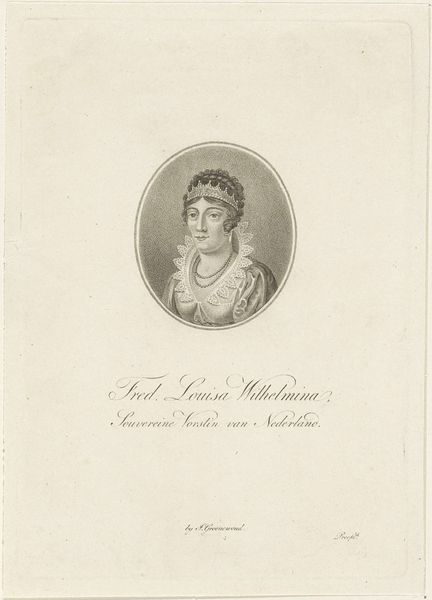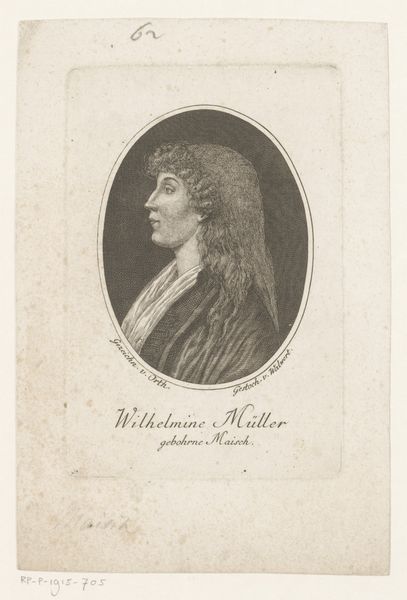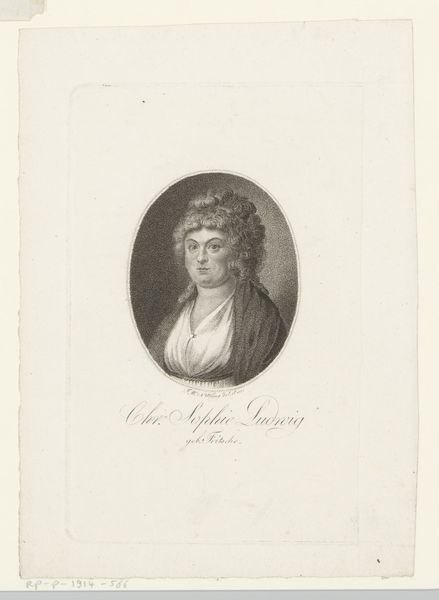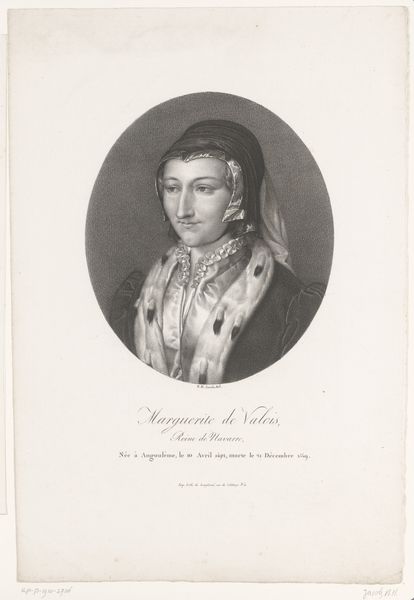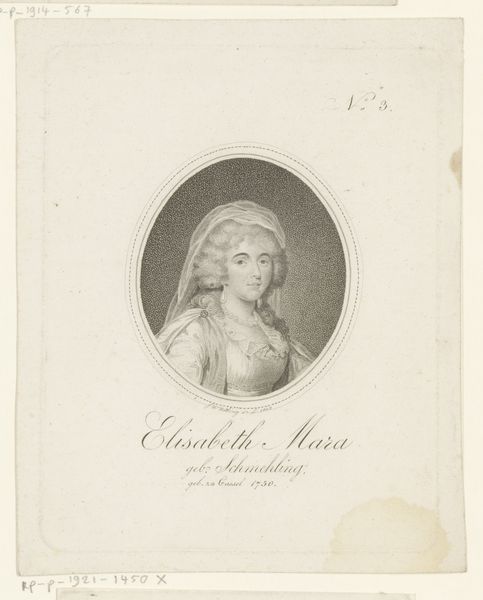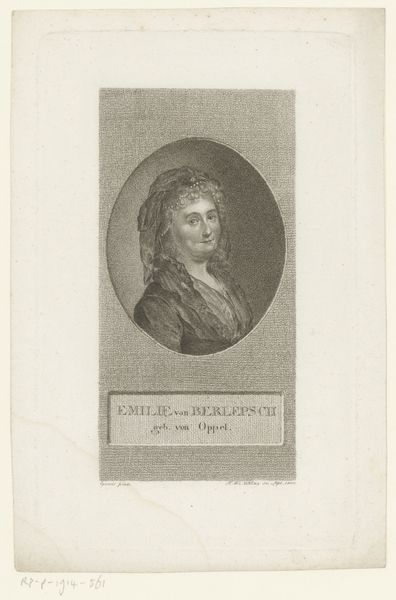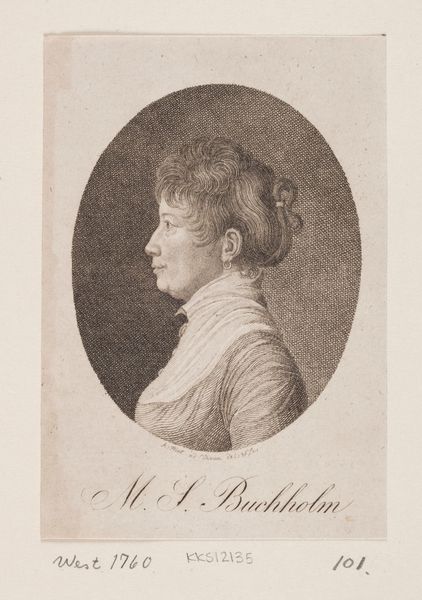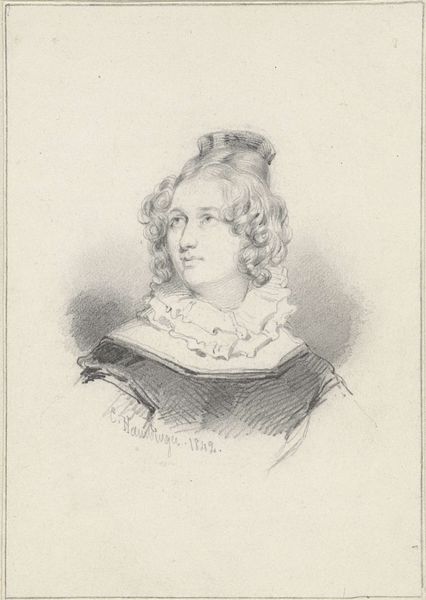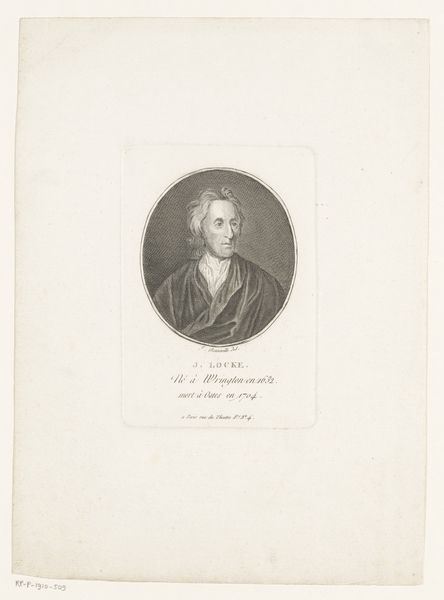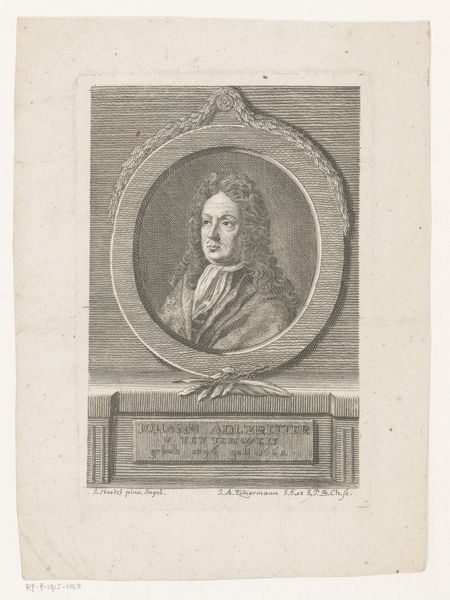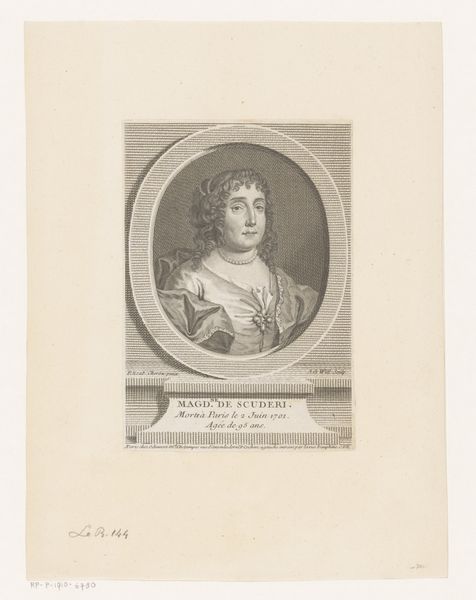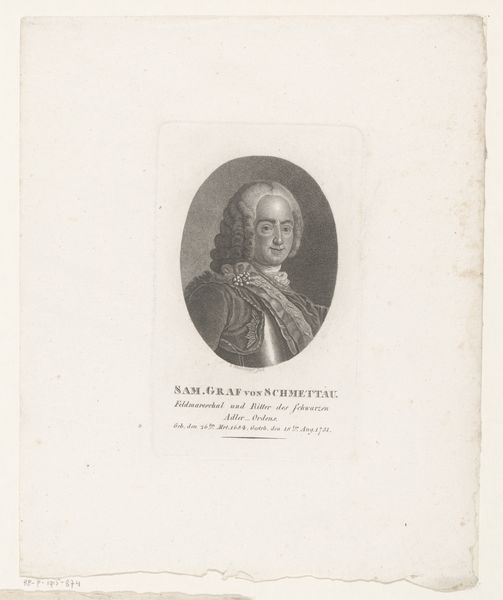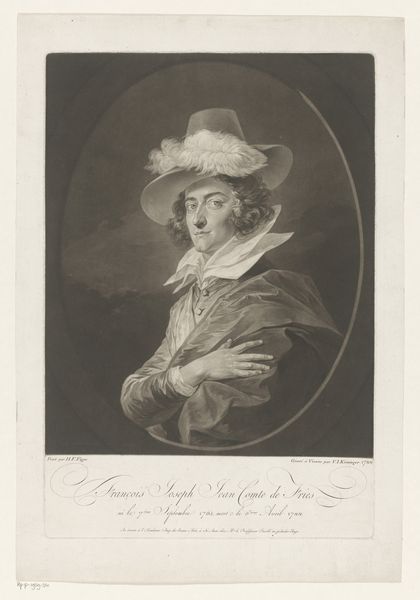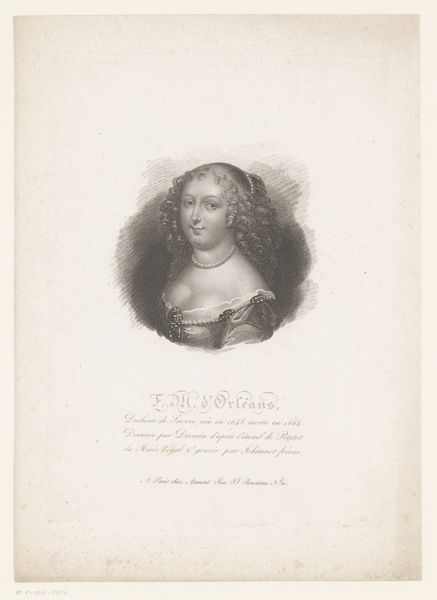
print, paper, engraving
#
portrait
#
neoclacissism
#
negative space
# print
#
old engraving style
#
paper
#
engraving
Dimensions: height 107 mm, width 84 mm
Copyright: Rijks Museum: Open Domain
Curator: Here we have Willem van Senus’s “Portret van Elisabeth Bekker,” an engraving on paper housed here at the Rijksmuseum. It’s dated from 1783 to 1851. Editor: What immediately strikes me is the softness. The rendering of the textures—the delicate lace, the folds of the shawl—it's all so meticulously and patiently done. Curator: Indeed. The neoclassical style is quite evident in the clear lines and balanced composition. Observe how the oval frame focuses our gaze directly on Bekker's face. Editor: And what labour! Imagine the skill required to produce such intricate details using engraving tools. I wonder about the social context of printmaking during this time and how it democratized art. Curator: Precisely, printmaking allowed for wider dissemination of images. We can consider this portrait within the context of 18th-century intellectual circles, as Elisabeth Bekker herself was a renowned novelist. Editor: So this isn't merely an image, but a statement on the status and intellectual labour of women being rendered visible through reproduced portraiture! The materiality speaks to the evolving technology used to distribute art and challenge older power structures. Curator: Fascinating, isn’t it, how the starkness of the black and white further accentuates her composed expression, directing us to contemplate her inner world. Editor: To think about it another way, even something as ubiquitous as paper becomes politically charged when considered a part of wider networks of communication, commerce, and accessibility of knowledge and imagery. Curator: Ultimately, van Senus's portrait operates on both levels; it celebrates Bekker's individual intellect while embodying the aesthetic values of its time. Editor: Right—the very process and materiality allow a subtle window into an era grappling with changing social values, class dynamics, and the means of disseminating ideas through an increasingly print-focused public.
Comments
No comments
Be the first to comment and join the conversation on the ultimate creative platform.
